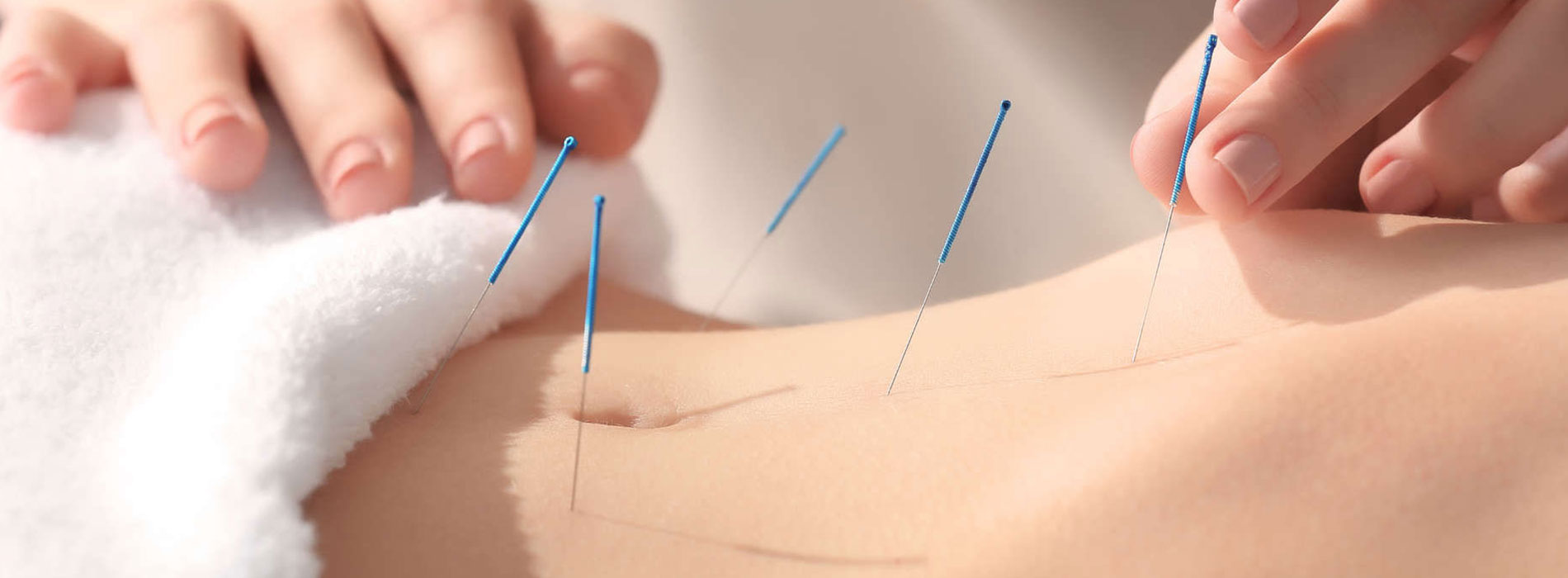In the medical community, acupuncture is viewed as a form of alternative treatment that promotes healing and well-being. Many Western countries including Australia have adopted acupuncture to supplement conventional medicine and improve the condition of their patients. The origins of acupuncture date back to over 2,000 years, making it one of the oldest health care systems that exist today.
Research suggests that acupuncture can help relieve pain, and it is used for a wide range of other complaints. Many patients have experienced positive benefits after the treatment. The Australia Acupuncture and Chinese Medicine Association (AACMA) published the Acupuncture Evidence Project in 2017 to determine the efficacy of acupuncture in today’s world. They analysed all available evidence that supports acupuncture and out of all the 122 conditions reviewed, they found evidence of effect in 117 conditions. Their findings include:
- Conditions with strong evidence supporting the effectiveness of acupuncture include knee osteoarthritis, migraine prophylaxis, allergic rhinitis, chronic low back pain, chemotherapy-induced nausea and vomiting, postoperative nausea & vomiting, postoperative pain, and headache (tension-type and chronic).
- Conditions with moderate evidence supporting the effectiveness of acupuncture include neck pain, acute low back pain, acute stroke, constipation, hypertension (with medication), obesity, anxiety, perimenopausal and postmenopausal insomnia, asthma, menopausal hot flushes, post-traumatic stress disorder, and irritable bowel syndrome.
However, according to the National Center for Complementary and Integrative Health (NCCIH) of USA, there is limited evidence for its effectiveness in areas other than pain.
In this article, we’ll discuss things you may need to know about acupuncture so you can figure out how it can benefit your health.
What is acupuncture?
Acupuncture is a form of treatment that involves the insertion of fine, sterile, single use, disposable needles into specific sites (acupuncture points) along the body’s energy pathways (meridians) to clear energy blockages and encourage the normal flow of energy, or Qi, through the body. According to Traditional Chinese Medicine (TCM), this practice helps relieve a variety of symptoms, alleviates pain and other medical conditions.
How does acupuncture work?
In order to get a full understanding of acupuncture, we must first discuss Traditional Chinese Medicine (TCM). TCM is an ancient system of healthcare created by the Chinese over 2,000 years ago. Their explanation of health is about achieving the perfect balance between the complementary extremes of “yin” and “yang”. If there is an imbalance between these two forces, the person is likely to feel sick or unwell.
According to TCM, the human body has between 365 to 2,000 nerve-rich acupuncture points that together create pathways (meridians) of microcirculation and physiological action. The theory is that stimulating these acupuncture points with needles is considered to release blockages that are causing illnesses, and bring the energy flow back into proper balance. Acupuncture is often used to encourage blood circulation and and provide immediate relief against many common aches and pains.
How acupuncture works scientifically remains unclear. Some people claim it works by balancing vital energy, while others believe it has a neurological effect. Currently, there is no supporting evidence to prove that these meridians do exist in the body. It is actually very hard to prove that they do or do not. But numerous studies suggest that acupuncture works for some conditions and many patients have experienced positive benefits after the treatment.
Some researchers are looking into neuroscience as a way to further explain how acupuncture works. Acupuncture points are viewed as areas in the body where muscles, nerves, and connective tissue exist. When the needles prick these areas, blood flow is stimulated and at the same time, they activate the body’s natural painkillers.
It can be difficult to study acupuncture using scientifically controlled methods due to its invasive nature. For example, in a clinical study, a control group will undergo sham treatment (placebo) and the results will be compared to those who underwent genuine acupuncture.
What can acupuncture help with?
Researchers in Germany have discovered that acupuncture can help with relieving tension headaches and migraines. Meanwhile, the NCCIH of the USA has created a list of conditions that acupuncture can help with and these are:
- low back pain
- neck pain
- osteoarthritis
- knee pain
- headache and migraine
Other conditions that may benefit from acupuncture require further research before being added to the list.
Back in 2003, the World Health Organization (WHO) published a list similar to the NCCIH to give patients an idea of where acupuncture works best. Conditions that were found to be receptive to acupuncture include:
- low and high blood pressure
- chemotherapy-induced nausea and vomiting
- some gastric conditions, including peptic ulcer
- menstrual cramps
- dysentery
- allergic rhinitis
- facial pain
- morning sickness
- rheumatoid arthritis
- sprains
- tennis elbow
- sciatica
- dental pain
- reducing the risk of stroke
- inducing labour
The WHO also suggests that acupuncture can aid in treating several infections like epidemic hemorrhagic fever and urinary tract infections. They do note, however, that “only national health authorities can determine the diseases, symptoms, and conditions for which acupuncture treatment can be recommended.”
How is acupuncture done?
A licensed TCM practitioner will first examine the patient and assess their general health by looking into their medical history along with a physical examination. Once the patient is deemed healthy for the acupuncture treatment, the acupuncturist will insert the acupuncture needles into certain points of the body. The patient will be asked to lie down on their front, side, or back, depending on which acupuncture points will be treated.
As the needles are inserted, the patient may feel a slight tingling sensation. The treatment should not cause any discomfort or significant pain. If you do, let your acupuncturist know immediately. After insertion, the needles may be stimulated through gentle movements done by the acupuncturist. They can also use an electronic pulse device to further stimulate the needles and augment the use of regular acupuncture (electroacupuncture).
Occasionally, you’ll feel a dull ache at the base of the needle that will subside as the treatment progresses. Acupuncture is usually relatively painless. Acupuncture needles stay in place for around 20 to 40 minutes, with shorter timeframes for people who have sensitive skin and longer treatment periods for those with chronic pain.
Australian laws require acupuncturists to use pre-sterilised, single-use needles. The needles should be made of solid, flexible stainless steel with a thickness of around 0.2 mm (as thin as a hair strand). This ensures that the needle will not penetrate any arteries or veins when inserted. and not designed to penetrate arteries or veins.
Since acupuncture is part of a holistic healthcare system, many acupuncturists incorporate other TCM treatments to further maximise the health benefits of acupuncture. Some examples are:
- Cupping therapy – CuppingTherapy is an ancient form of therapy that involves using special cups to create suction on different parts of the body. Modern TCM practitioners use cups made from sterilisable glass instead of traditional bamboo or porcelain. The cups are applied using a hand pump or small flame to create the suction. The vacuuming effect of the cups encourages blood flow to the acupuncture points which helps relax the muscles and sedate the nervous system. Cupping is only done to healthy tissue and relatively strong bodies. Most patients are concerned about the red cup marks created by cupping therapy. This is a normal response and will usually go away after a few days.
- Chinese remedial massage (Tui Na) – Tui na is a form of Chinese remedial massage that combines both massaging and acupressure to treat multiple patterns of energy disharmony within the body. Tui na utilises various hand techniques to pinch and pull the skin, thus helping to facilitate the flow of qi throughout the patient’s body.
- Moxibustion – Moxibustion is a form of heat therapy wherein dried plants called “moxa” (which are made of ground mugwort leaves) are heated on or near the surface of the skin. Moxibustion is said to promote blood circulation to the acupuncture points to relieve muscle tension or chronic pain.
- Gua Sha – Also known as spoon therapy, Gua Sha involves scraping the surface of the body with the goal of improving blood circulation. TCM practitioners claim that this type of therapy produces an adaptogenic effect and can be beneficial for long-standing pain.
What are the risks associated with acupuncture?
Like with most therapies, there are a couple of risks associated with acupuncture. While rare, it’s important that you work with a trained and qualified TCM practitioner so that the entire procedure is done in a safe and controlled manner.
Rarely, some people experience short-term side effects during and after acupuncture which are:
- pain where the needles puncture the skin
- bleeding or bruising where the needles puncture the skin
- drowsiness
- feeling sick
- dizziness
- worsening of pre-existing symptoms
If you are taking anticoagulants or have a bleeding disorder, talk to your GP before undergoing acupuncture. People who are allergic to metals may not be ideal candidates for acupuncture since the thin needles are made of stainless steel and may cause skin irritation.
Acupuncture is generally safe for pregnant women. However, you may want to inform your TCM practitioner that you’re pregnant since some acupuncture points cannot be used while a patient is under pregnancy. Treat acupuncture as a form of complementary therapy and pair it with conventional treatments to offer you the best chance of recovery from chronic pain or illnesses.
Choosing an acupuncturist
When it comes to choosing an acupuncturist, you want to make sure that the TCM practitioner is experienced and qualified. It can be perplexing at first, but by following these tips, you’ll feel confident in choosing the best acupuncturist in your area.
Here are a couple of pointers worth noting:
- Qualification – This is the most important step in finding the right acupuncturist. Ensure you choose a nationally accredited acupuncturist with legitimate qualifications. All practising acupuncturists in Australia are required by law to be nationally accredited and carry malpractice insurance so look for these two qualifications during your search.
- Current knowledge – Check whether your acupuncturist is up to date on the latest trends and practices regarding acupuncture. Modern TCM practitioners combine ancient Chinese methods with practical medical knowledge to maximise the benefits that acupuncture can provide.
- Expertise – While an acupuncturist can help with treating a wide variety of conditions, some practitioners excel in areas like treating pain or discomfort. Try to find an acupuncturist whose expertise meets your specific health needs.
- Cleanliness – Cleanliness and sanitation are crucial to ensuring the best acupuncture experience possible. You want to confirm with your acupuncturist if they use sealed, single-use needles for their practice as this is a legal requirement in Australia.
For more information on acupuncture and Traditional Chinese Medicine please contact us at our clinics (Perth: 9228 8828; Subiaco: 9380 4171). Alternatively, you can send us your queries through our online contact page.


